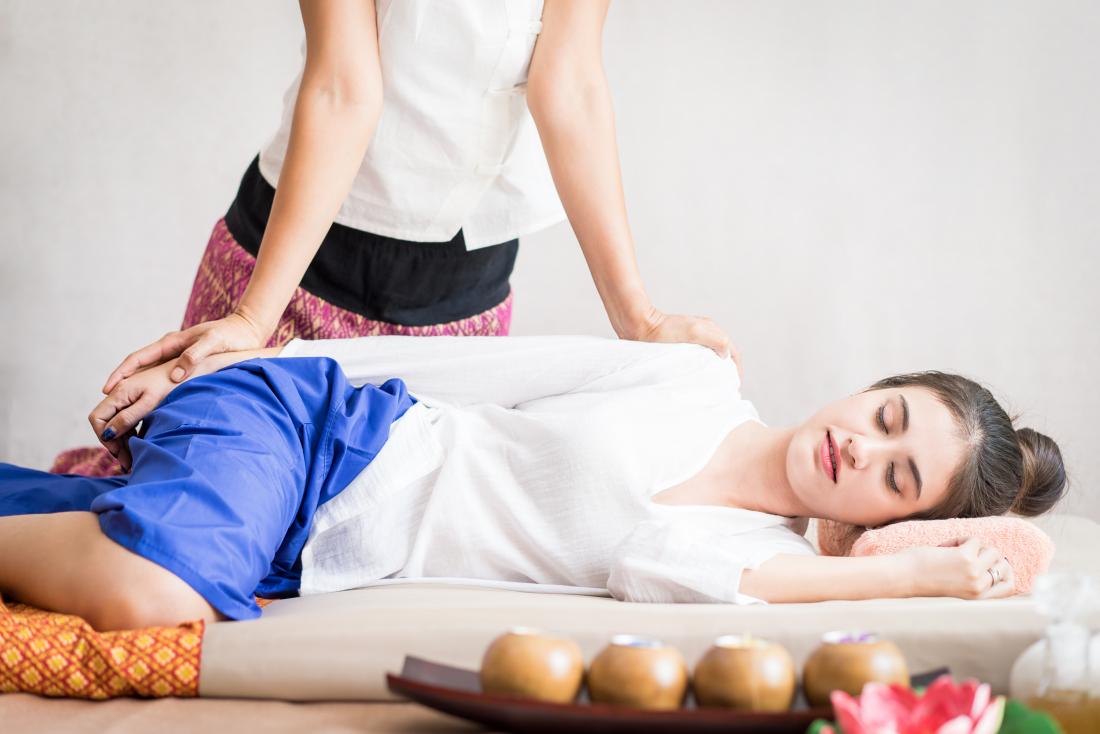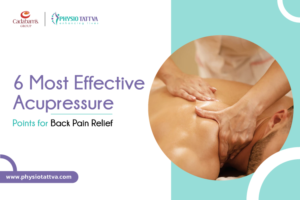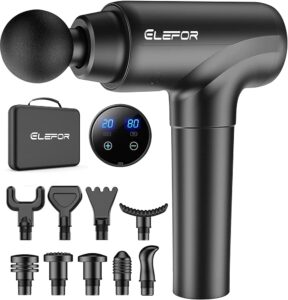Yes, Thai massage typically includes extensive work on the legs. It aims to improve circulation and flexibility.
Thai massage is a traditional healing practice that incorporates rhythmic compressions, deep stretching, and joint mobilization. It originated in Thailand and is based on the idea of energy lines running through the body. Thai massage is usually performed on a floor mat, with the recipient fully clothed.
The practitioner uses their hands, elbows, knees, and feet to apply pressure and perform stretching movements throughout the body, including the legs. Thai massage is known for its ability to alleviate muscle tension, improve flexibility, and promote overall relaxation. The inclusion of leg massage within the practice is essential for addressing the body’s entire musculoskeletal system.
The Inclusion Of Legs In Thai Massage
Thai massage is renowned for its unique combination of techniques that focus on the entire body, and yes, it does include the legs. The ancient art of Thai massage aims to improve overall wellbeing by balancing the body’s energy and releasing physical and mental tension.
Traditional Thai Massage Techniques
The traditional Thai massage, also known as Nuad Bo-Rarn, incorporates various techniques such as stretching, compression, and acupressure. These techniques are applied to different parts of the body, including the legs, to promote relaxation and alleviate tension.
Focus On Lower Body In Thai Massage
When it comes to Thai massage, the lower body, including the legs, receives focused attention. Therapists use their hands, elbows, and feet to apply pressure along the energy pathways, known as “sen lines,” and perform passive stretching to improve flexibility and circulation in the legs.

Credit: m.facebook.com
Benefits Of Thai Massage For Legs
Thai massage is a traditional healing art that offers a myriad of benefits for the entire body, including the legs. The techniques used in Thai massage are designed to address physical, mental, and emotional imbalances, promoting overall wellness. When it comes to the legs, Thai massage can contribute significantly to improved circulation, enhanced flexibility, and range of motion.
Improved Circulation
Thai massage stimulates the circulatory system, helping to improve blood flow throughout the body, including the legs. This increased circulation can benefit the legs by providing nutrients and oxygen to the muscles and aiding in the removal of waste products. Moreover, the enhanced blood flow can promote faster recovery from muscle fatigue and improve overall leg health.
Enhanced Flexibility And Range Of Motion
Through a combination of stretching and muscle manipulation, Thai massage can help improve the flexibility and range of motion in the legs. The techniques used in Thai massage target specific muscle groups and release tension, allowing for improved flexibility and movement in the legs. This can be particularly beneficial for individuals who experience tightness or limited mobility in their legs.
Specific Techniques For Leg Massage
Thai massage is a holistic practice that involves working on the entire body, including the legs. When it comes to leg massage, there are specific techniques that are used to promote relaxation and release tension. Let’s delve into the specific techniques for leg massage that are commonly employed during a Thai massage session:
Stretching Movements
Thai massage incorporates various stretching movements that focus on elongating the muscles in the legs. These movements help improve flexibility and relieve muscle tightness. By applying gentle pressure and stretching techniques, the massage therapist can target specific areas of tension in the legs.
Pressure Points On Legs
Pressure points are key areas on the legs that correspond to different parts of the body. During a Thai massage, the therapist may apply firm pressure to these points to stimulate energy flow and release blockages. This can help alleviate pain and promote overall well-being.

Credit: www.dior.com
Precautions For Leg Massage In Thai Massage
When receiving a Thai massage, it is important to understand the precautions and considerations for leg massage. Thai massage is a combination of stretching, acupressure, and massage techniques that are applied to the entire body, including the legs. While these leg massage techniques can bring numerous benefits, it is crucial to follow some precautions to ensure a safe and effective massage experience. In this section, we will discuss two main precautions that you should be aware of: avoiding excessive pressure and communicating with the massage therapist.
Avoiding Excessive Pressure
One of the primary precautions for leg massage in Thai massage is to avoid excessive pressure. While Thai massage can involve deep tissue techniques, applying too much pressure on the legs can potentially lead to discomfort, pain, or even injury. It is essential for the massage therapist to gauge the individual’s tolerance level and adjust the pressure accordingly. Pay attention to any signs of discomfort or pain during the leg massage and communicate with the therapist if necessary.
To avoid excessive pressure, the massage therapist should gradually increase the pressure during the leg massage, allowing the muscles to gradually relax and adapt. This gradual approach helps to prevent any sudden discomfort or strain on the legs. It is also important for the therapist to have the necessary training and expertise in Thai massage techniques to ensure a safe and effective leg massage.
Communicating With The Massage Therapist
Another crucial precaution for leg massage in Thai massage is effective communication with the massage therapist. Communication is key to ensuring that the therapist understands your needs, preferences, and any specific concerns you may have regarding your legs. Prior to the massage, it is important to communicate any history of leg injuries, surgeries, or conditions that the therapist should be aware of.
During the leg massage, do not hesitate to communicate with the therapist if you experience any discomfort, pain, or if the pressure feels too intense. The therapist will be able to adjust their techniques and pressure based on your feedback, ensuring a more comfortable and personalized leg massage experience. Open and honest communication helps to establish trust and allows the therapist to provide a massage tailored to your specific needs.
In conclusion, when receiving a Thai massage that includes leg massage, it is crucial to take precautions to ensure a safe and effective experience. Avoiding excessive pressure and communicating with the massage therapist are two important precautions to keep in mind. By following these precautions, you can enjoy the numerous benefits of leg massage in Thai massage without any unnecessary discomfort or risk of injury.
Incorporating Leg Massage Into Your Wellness Routine
Thai massage is a holistic therapy that focuses on restoring balance and harmony to the body and mind. While many people are aware of the benefits of Thai massage for the back, shoulders, and neck, the legs are often overlooked. However, incorporating leg massage into your wellness routine can provide tremendous benefits for your overall well-being.
Frequency Of Leg Massage
When it comes to leg massage, the frequency can vary depending on your individual needs and preferences. However, it is generally recommended to incorporate leg massage into your wellness routine at least once or twice a week to experience its full benefits. Consistency is key when it comes to reaping the rewards of this therapeutic practice.
Combining Leg Massage With Other Therapies
Combining leg massage with other therapies can enhance the overall therapeutic effects and provide a more comprehensive wellness experience. For example, incorporating leg massage into your routine before or after a workout can help relax and stretch the muscles, reduce muscle soreness, and improve flexibility.
In addition, combining leg massage with aromatherapy can create a truly indulgent and relaxing experience. Infusing the massage with essential oils known for their soothing and rejuvenating properties can elevate the benefits of the therapy.
Furthermore, incorporating leg massage with meditation or deep breathing exercises can enhance the mind-body connection and promote a deeper sense of relaxation and overall well-being.
Consider creating a wellness routine that combines leg massage with other therapies that align with your specific goals and needs. Whether you are looking to reduce stress, improve circulation, or enhance flexibility, combining leg massage with other therapies can provide a well-rounded approach to your wellness journey.

Credit: www.medicalnewstoday.com
Frequently Asked Questions For Does Thai Massage Include Legs
What Does Thai Massage Include?
Thai massage includes acupressure, stretching, and joint mobilization techniques. It focuses on energy lines and pressure points to promote relaxation and improve flexibility.
What Does A Full Body Massage Consist Of In Thailand?
A traditional full body massage in Thailand includes stretching, pressure points, and deep tissue techniques. It focuses on improving circulation, relieving muscle tension, and promoting overall relaxation and well-being. The massage typically incorporates the use of oils or balms for a soothing experience.
Is Thai Massage Done With Clothes On?
Yes, Thai massage is typically done with clothes on, and clients wear comfortable clothing.
What Is Thai Leg Massage?
Thai leg massage is a therapeutic treatment focusing on the legs, combining stretching, acupressure, and massage techniques to improve circulation and reduce muscle tension.
Conclusion
Thai massage provides comprehensive relaxation for the entire body, including the legs. It focuses on balancing energy flow, releasing tension, and improving flexibility. By incorporating leg massage into the therapy, Thai massage offers a holistic approach to wellness and rejuvenation.
Experience the benefits of full-body relaxation with Thai massage therapy.



